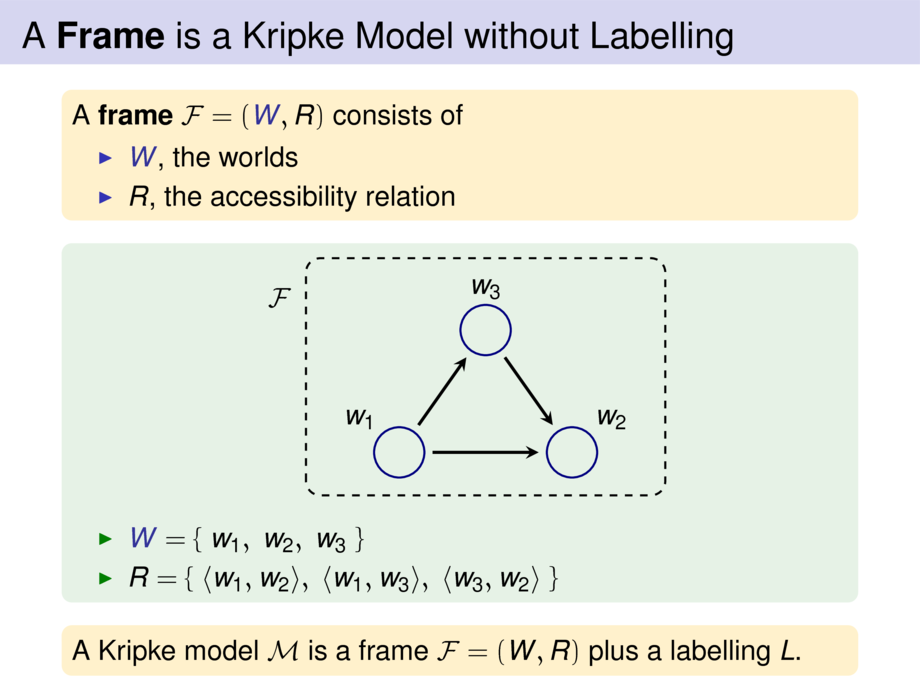



































































































19/122
\begin{frame}
\frametitle{A \emph{Frame} is a Kripke Model without Labelling}
\begin{goal}{}
A \emph{frame} $\mathcal{F} = (\BLUE{W},R)$ consists of
\begin{itemize}
\item $\BLUE{W}$, the worlds
\item $R$, the accessibility relation
\end{itemize}
\end{goal}
\begin{exampleblock}{}
\begin{center}
\begin{tikzpicture}[
default,
point/.style={circle, draw=blue, thick, inner sep=3pt, minimum size=7mm},
node distance=17mm]
\node (3) [point] {};
\node [ao=3] {$w_3$};
\node (2) [point, below right of=3,yshift=-5mm] {};
\node [aro=2] {$w_2$};
\node (1) [point, below left of=3,yshift=-5mm] {};
\node [alo=1] {$w_1$};
\begin{scope}[shorten <= 1mm, shorten >= 1mm, very thick,>=stealth]
\draw [->] (1) to (2);
\draw [->] (1) to (3);
\draw [->] (3) to (2);
\end{scope}
\draw [rounded corners=2mm, dashed] (-25mm,-23mm) rectangle (25mm,10mm);
\node at (-25mm,8mm) [anchor=north east,inner sep=2mm] {$\mathcal{F}$};
\end{tikzpicture}
\end{center}
\vspace{-2ex}
\begin{itemize}
\item $\BLUE{W}= \{\; w_1,\; w_2,\; w_3 \; \}$
\item $R = \{ \;\pair{w_1}{w_2},\; \pair{w_1}{w_3},\; \pair{w_3}{w_2}\; \}$
\end{itemize}
\end{exampleblock}
\pause
\begin{goal}{}
A Kripke model $\M$ is a frame $\F = (W,R)$ plus a labelling $L$.
\end{goal}
\end{frame}

